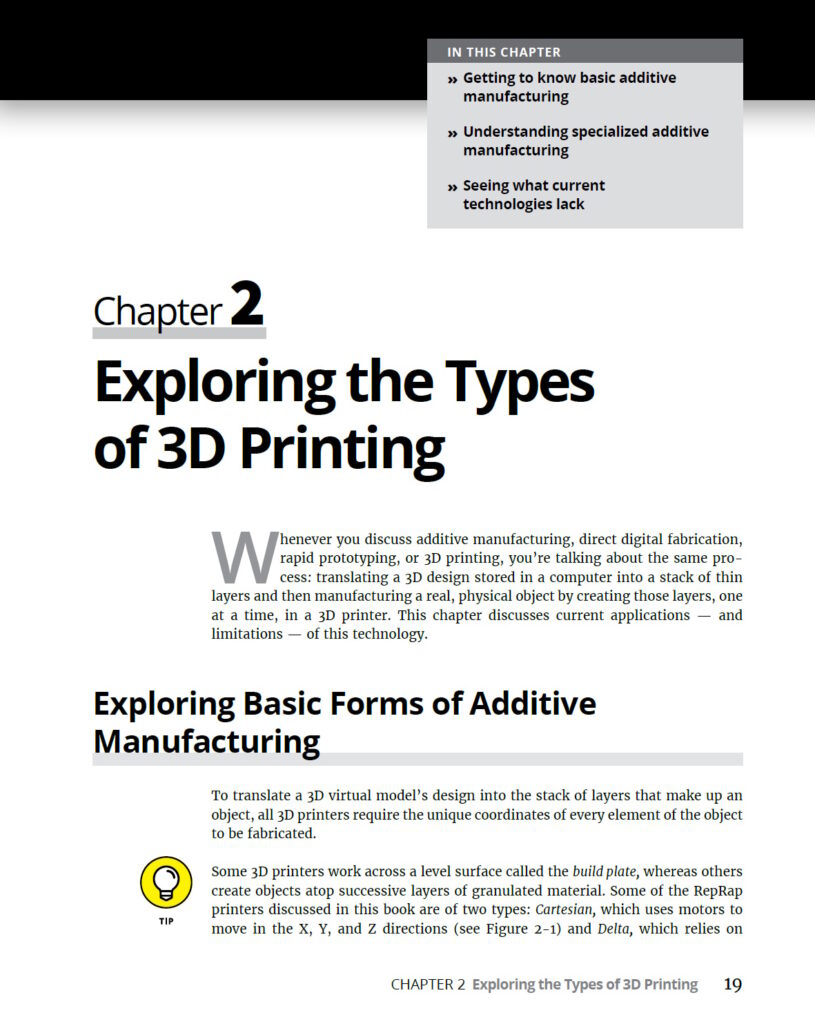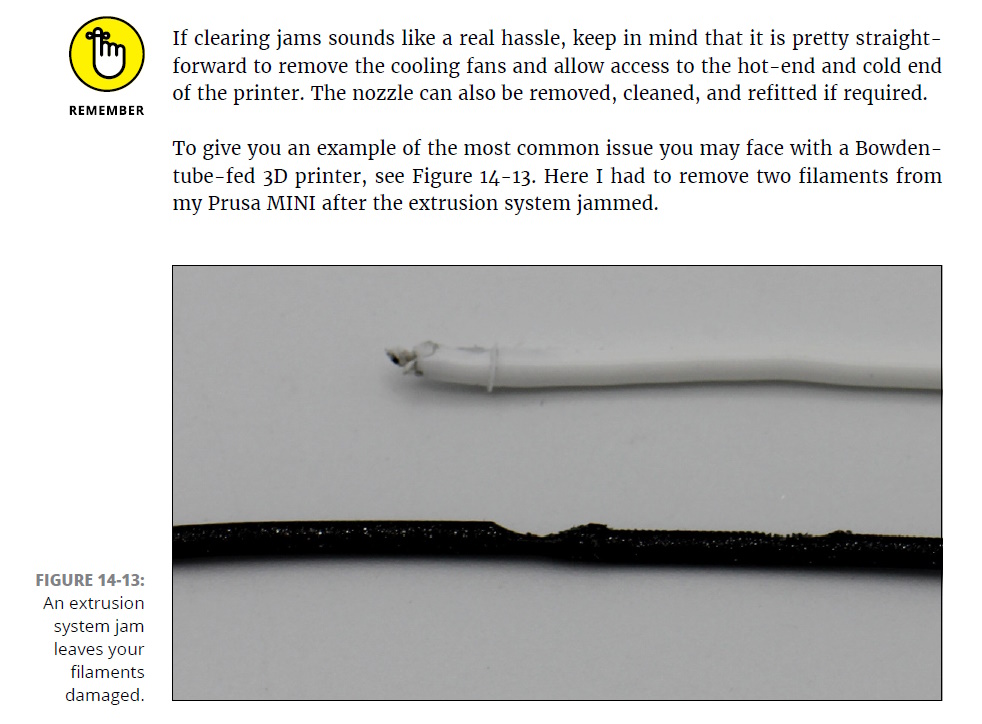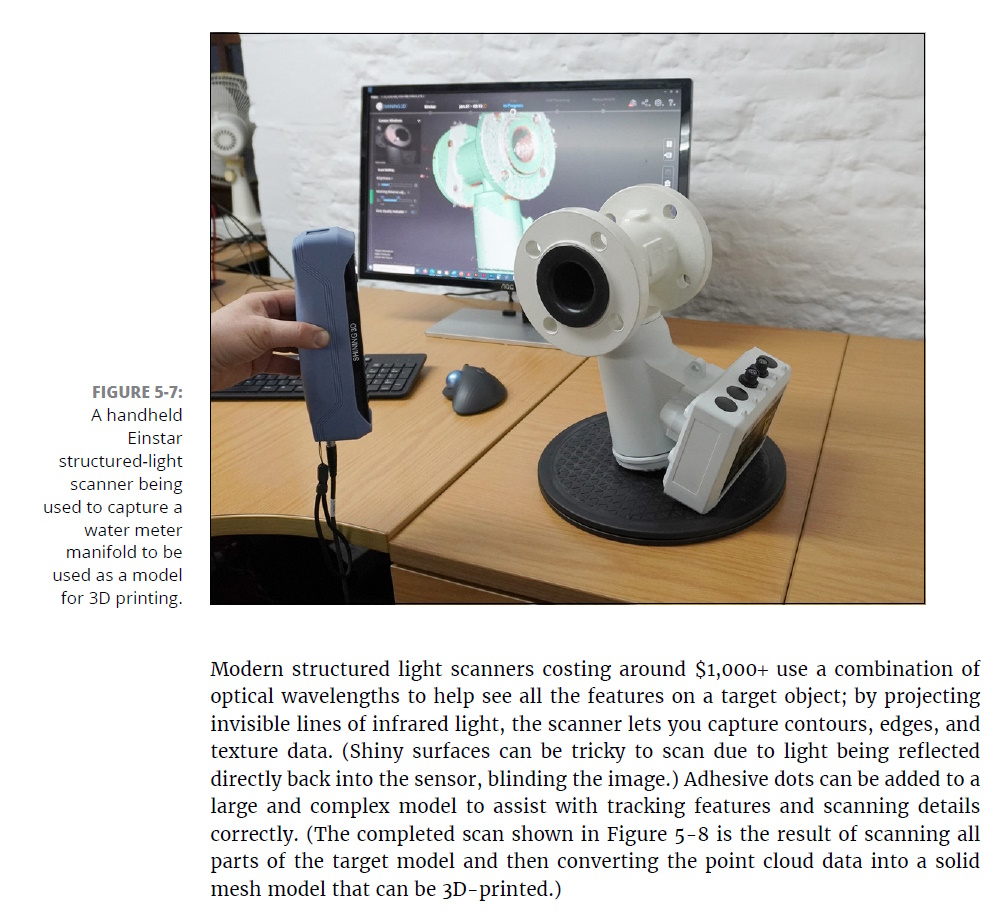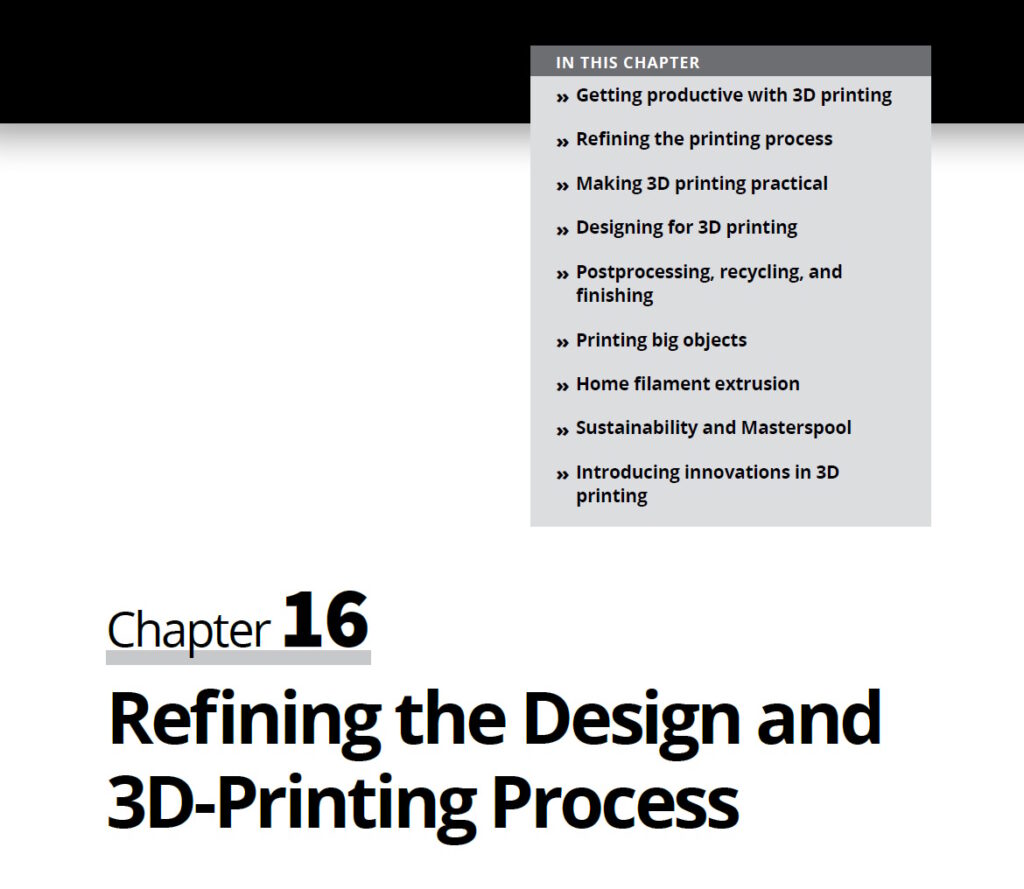I’ve never had the highest opinion of the For Dummies series. I always thought of these books as the kind that people give to dads and uncles to support a hobby they will lose interest in within six months. Their existence seems even more quaint in the age of YouTube and TikTok. Do I really need a generalized reference book on, say, boiler maintenance, when I could easily find a video of someone remedying my exact problem on my exact model of boiler?
Despite this bias, I can say with no hesitation that 3D Printing for Dummies by Richard Horne absolutely has a place on the shelf for those new to the hobby or looking for a quick reference to educate others on 3D printing.
Instead of guiding a novice 3D printer user toward printing Benchies, this book’s initial chapters ensures that you grasp the potential of 3D printer as tools for manufacturing. The first chapter defines and explains additive manufacturing (AM) and practical applications for 3D printing. Its second section explores the types of materials available in AM—from plastics to metals to chocolate—as well as how to access online object repositories like Thingiverse and using photogrammetry to create 3D models.
The book doesn’t begin to help an interested consumer think about selecting a 3D printer until about 160 pages in. It might seem strange to frontload the text with so much information about manufacturing and material types but I think it serves as a way to filter out those not ready to commit to AM – either as a hobby or professionally. If your eyes glaze over while reading about the difference between a bedslinger and a delta system, you just might be barking up the wrong tree.
The value of the information presented in this text is going to fluctuate depending on where you are in your 3D printing journey. If you’ve been tuning printers and blasting through rolls of filament for the last few years, most of this book won’t be useful to you. If you are absolutely new to AM or are teaching others about it, then the utility of this volume becomes much clearer.
While there are certainly plenty of online videos and websites that contain much of the same information, you would be hard-pressed to find a writer as clear and concise as Horne. He definitely must be lauded for the way he can convey the engineering concepts at work in 3D printing in such simple and jargon-free passages. And never once does it feel like he was writing for an audience of “dummies.” Beyond just being a clear writer, he’s incredibly sharp and witty as well. I found it very difficult to put this book down. It’s a quick read and I walked away from every single chapter having learned something new. Perhaps it’s a bit embarrassing to admit, but I probably would’ve finished reading it faster if some passage or chapter hadn’t inspired me to get up and tinker at my own printer for a bit.
Horne’s long-term involvement in the RepRap scene means he has a ton of personal insight into the design, maintenance and function of common 3D printer models. While he only discussed it briefly, after highlighting his experience designing a paste extruder, I spent a few minutes trying to decide if I was ready to make a Frankenstein out of my Ender and ditch PLA for clay.
The chapters dedicated to the sourcing of parts and assembly of a 3D printer are without a doubt the simplest instructions and guidelines to printer instruction I’ve yet encountered. Dare I say, this book probably could have helped me put my printer together faster and with less trouble than the instructions that came with it. While Horne focuses on the Prusa i3 as the text’s default machine, the information provided on both the moving parts and electronics involved in a printer’s operation are applicable to most desktop extrusion systems on the market.
There is an intriguing emphasis on the business side of 3D printing embedded all over the text. From blurbs that warn of intellectual property concerns to information on how to run a print-farm, the book offers a very high-level overview of the ways 3D printing is changing traditional manufacturing. For the people just interested in printing tchotchkes or cosplay props to cover the cost of their printer and materials, you may be better off scouring YouTube for a guide. But for entrepreneurs and investors who want to learn more about this technology, you couldn’t ask for a better introduction.
Overall, I found 3D Printing for Dummies to be a breezy but highly educational read. This book has a place on the desk of anyone looking for a handy reference to the foundational concepts of 3D printing and printer construction.
Subscribe to Our Email Newsletter
Stay up-to-date on all the latest news from the 3D printing industry and receive information and offers from third party vendors.
You May Also Like
Gorilla Sports GE’s First 3D Printed Titanium Cast
How do you help a gorilla with a broken arm? Sounds like the start of a bad joke a zookeeper might tell, but it’s an actual dilemma recently faced by...
Nylon 3D Printed Parts Made More Functional with Coatings & Colors
Parts 3D printed from polyamide (PA, Nylon) 12 using powder bed fusion (PBF) are a mainstay in the additive manufacturing (AM) industry. While post-finishing processes have improved the porosity of...
$25M to Back Sintavia’s Largest Expansion of Metal 3D Printing Capacity Since 2019
Sintavia, the digital manufacturing company specializing in mission-critical parts for strategic sectors, announced a $25 million investment to increase its production capacity, the largest expansion to its operations since 2019....
Velo3D Initiates Public Offering in a Bid to Strengthen Financial Foundations and Drive Future Growth
Velo3D (NYSE: VLD) has been among a number of publicly traded 3D printing firms that have attempted to weather the current macroeconomic climate. After posting a challenging financial report for 2023,...



































